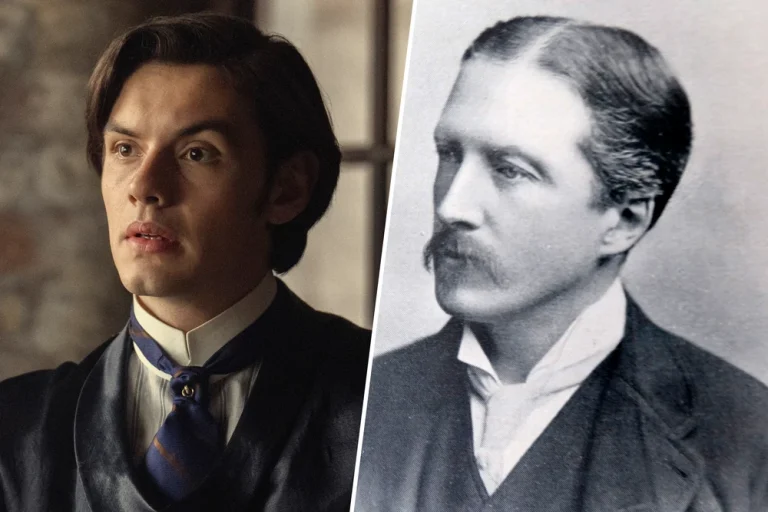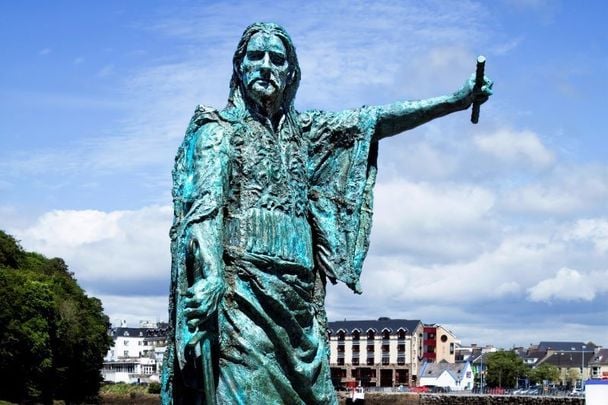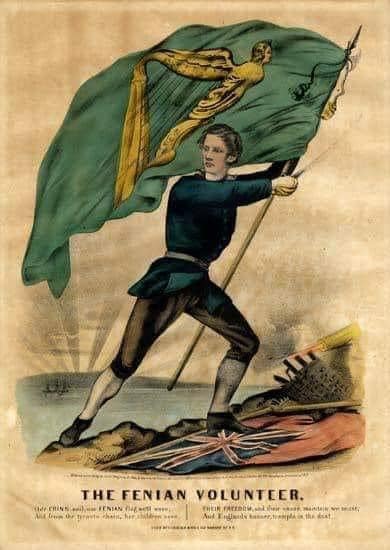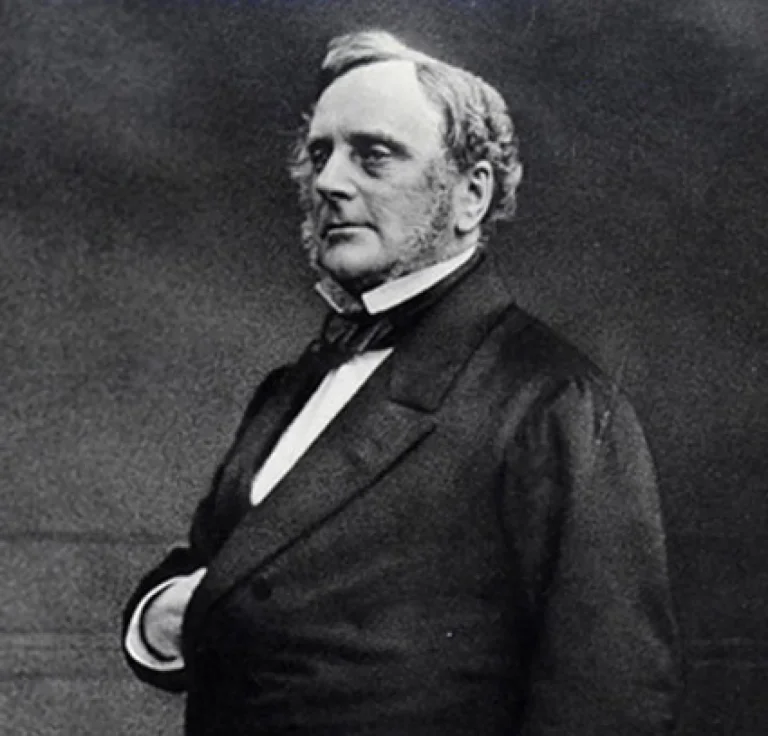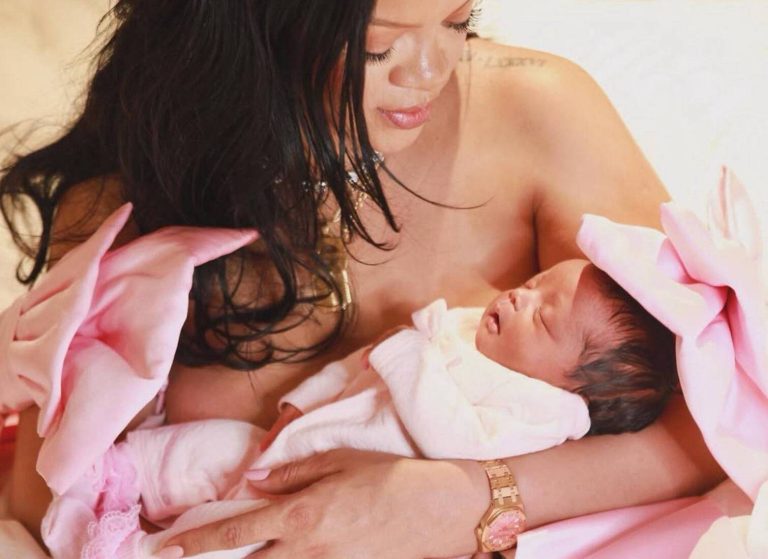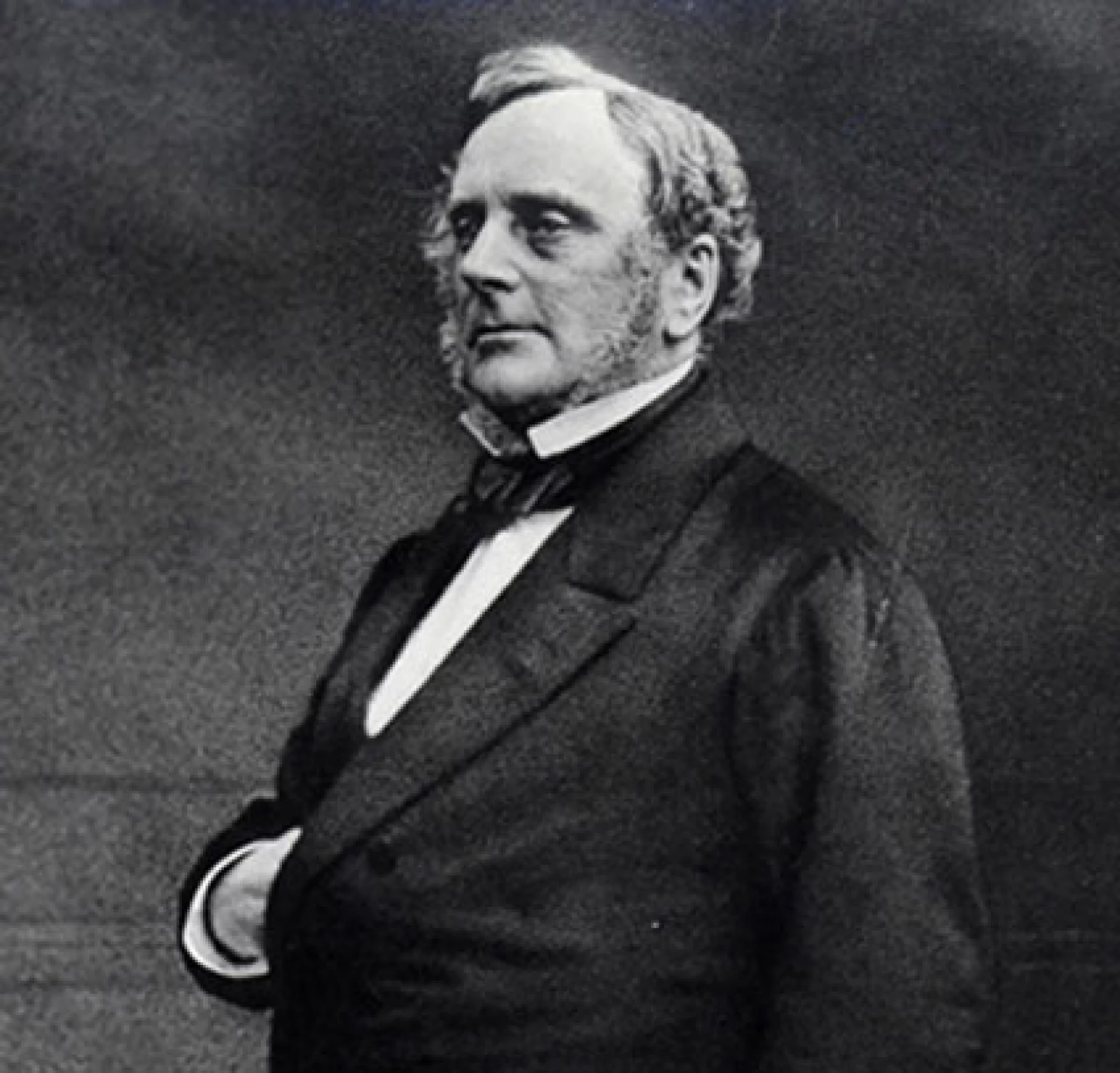
In the annals of Irish history, few names evoke as much pride, intrigue, and enduring legacy as Benjamin Guinness. Born into the shadow of the groundbreaking Arthur Guinness, Benjamin not only upheld the family tradition but propelled it into global stardom.
As we delve into the world of Benjamin Guinness Freemason connections, his profound Benjamin Guinness will, and the sprawling branches of his lineage—including Arthur Guinness, 1st Baron Ardilaun, Arthur Guinness II, Edward Guinness, 1st Earl of Iveagh, Bryan Guinness, and Walter Guinness, 1st Baron Moyne—this comprehensive guide uncovers the man behind the myth.
Whether you’re a history buff, a stout enthusiast, or simply curious about the Benjamin Guinness children who shaped empires, this 3000-word exploration offers fresh insights into one of Ireland’s most storied families.
From the misty streets of 19th-century Dublin to the opulent estates of England, Benjamin Guinness’s life was a tapestry of innovation, philanthropy, and quiet power.
His story isn’t just about brewing beer; it’s about building a dynasty that weathered famines, wars, and societal upheavals. As the grandson of the original Arthur Guinness—who signed that legendary 9,000-year lease on St. James’s Gate in 1759—Benjamin inherited more than a brewery.
He inherited a vision. And in executing it, he became synonymous with Irish resilience. Today, with the global allure of Guinness stronger than ever, understanding Benjamin’s role is key to appreciating the brand’s soul.
For an immersive dive into the modern retelling of this saga, check out Netflix’s House of Guinness, which dramatizes the family’s trials post-Benjamin’s death. And for authentic Irish perspectives, explore this ultimate guide to the Netflix epic or the rich history of Guinness on Secret Ireland. Ready to raise a glass to history? Let’s pour into the details.
Early Life and Rise: From Dublin Brewer’s Son to Industrial Titan
Born on November 1, 1798, in Dublin, Benjamin Lee Guinness entered a world on the cusp of transformation. He was the third son of Arthur Guinness II (1768–1855), the son of the brewery’s founder, and Anne Lee. Arthur II, a shrewd businessman, expanded the fledgling operation into Ireland’s largest brewery by the early 1800s, exporting stout to Britain and beyond.
Benjamin, educated privately and immersed in the family trade from age 16, joined the business in his late teens. Without formal university training, his apprenticeship under his father honed a practical genius that would define his era.
By 1839, following Arthur II’s retirement, Benjamin assumed sole control alongside partner John Purser. What followed was a masterclass in scaling: he tripled production, mechanized operations, and targeted export markets voraciously.
Under his stewardship, Guinness became a household name, its dark, velvety porter a staple for sailors, soldiers, and statesmen alike. Benjamin’s innovations weren’t just logistical; they were cultural. He positioned Guinness as a nutritious tonic—prescribed by doctors for its iron content—turning a humble ale into a health elixir during Ireland’s turbulent 19th century.
But Benjamin’s ambitions extended beyond barrels. Elected as a Conservative MP for Dublin City in 1865, he championed infrastructure and urban renewal.
As Lord Mayor of Dublin in 1851, he funded the restoration of St. Patrick’s Cathedral and the construction of the Annie Lee Bridge—named for his eldest daughter.
His philanthropy, rooted in Protestant values, bridged divides in a famine-ravaged Ireland, earning him the moniker “The Governor” among his Benjamin Guinness children.
Yet, whispers of his Benjamin Guinness Freemason affiliations added an air of mystery. As a member of the Masonic fraternity, Benjamin networked with elites, blending fraternal bonds with business acumen. These ties, though speculative in direct impact, underscored his role in Dublin’s shadowy power structures.
Benjamin’s personal life mirrored his professional ascent. On February 24, 1837, he married his first cousin, Elizabeth Guinness (1813–1865), daughter of Edward Guinness.
Their union produced Benjamin Guinness children: four in total—Annie Lee (1839–1889), Arthur Edward (1840–1915), Benjamin Lee Jr. (1842–1900), and Edward Cecil (1847–1927). Living at Beaumont House in north County Dublin, and later acquiring Iveagh House on St. Stephen’s Green in 1856, the family embodied Victorian opulence. Beaumont, with its manicured gardens and art-filled halls, was a haven where Benjamin instilled values of faith, charity, and hard work. Sundays meant church; weekdays, brewery duties for the boys from a tender age.
Tragedy struck early: Elizabeth’s death in 1865 left Benjamin a widower, channeling his grief into legacy-building. He acquired Ashford Castle in County Mayo, transforming it into a family retreat that symbolized his ascent from brewer to baron. Knighted in 1867 and created 1st Baronet, Benjamin’s honors reflected a life of quiet dominance. His estate, upon death, was valued at £1.1 million—the largest in Irish history at the time—proving his porter’s “popularity reached across the nation and then the world.”
The Enigmatic Benjamin Guinness Freemason: Secrets of Influence and Brotherhood

Speculation swirls around Benjamin’s Masonic ties, a facet that elevates him from mere industrialist to enigmatic figure. Freemasonry, with its rituals and networks, was a cornerstone of 19th-century elite society.
As a Benjamin Guinness Freemason, he likely joined Dublin lodges, forging alliances that smoothed brewery expansions and political maneuvers.
Historians note Masons’ role in Irish infrastructure—canals, harbors, bridges—and Benjamin’s projects align eerily. Was the Annie Lee Bridge a fraternal tribute? Or his cathedral restorations a nod to Masonic philanthropy?
While records are veiled (as per Masonic tradition), Benjamin’s era saw brewers like him using lodges for discreet deals. His Conservative politics and unionist leanings fit the fraternity’s pro-establishment bent.
In a divided Ireland, these connections buffered Guinness against Fenian unrest, ensuring exports flowed amid rebellion. Today, Freemason lore adds allure to Benjamin’s portrait: a man whose public benevolence masked private rituals of brotherhood. For deeper dives, The United Grand Lodge of England offers authoritative insights into this storied institution.
Benjamin Guinness Will: A Legacy That Shaped Generations
No chapter in Benjamin’s saga captivates like his Benjamin Guinness will, probated after his death on May 19, 1868, at his London home. At 69, Benjamin succumbed to illness, his funeral—a procession of 500 employees and 239 carriages—the grandest Dublin had seen. Buried in Mount Jerome Cemetery’s family vault, he left not just wealth but a blueprint for dynasty.
The will’s drama unfolds in Netflix’s House of Guinness: joint brewery control to sons Arthur and Edward, with the condition (dramatized) that refusal meant forfeiture. In reality, it was pragmatic: Arthur, the eldest, inherited St. Anne’s and Ashford; Edward, the youngest, got Iveagh House and operational reins. Benjamin Jr. received estates but pursued military life; Annie, charitable pursuits. This “splitting the G”—dividing assets equitably—averted feuds, though tensions simmered. Arthur bought Edward’s share in 1876? No—Edward bought Arthur’s for £600,000, becoming sole proprietor and ballooning the firm to global giant.
The will’s £1.1 million valuation stunned: paintings, sculptures, properties. Trusts protected minors, emphasizing education and piety. It mirrored Benjamin’s ethos—work mingled with worship—ensuring the Benjamin Guinness children carried the torch. As one biographer notes, “Although everyone knew Sir Benjamin was rich, it was only when he died that the full extent became apparent.” This document didn’t just distribute wealth; it distributed destiny, birthing barons and earls.
The Benjamin Guinness Children: Heirs Who Forged Their Paths
The Benjamin Guinness children were no footnotes; they were chapters. Eldest Annie Lee Guinness (1839–1889) married William Conyngham Plunket, 4th Baron Plunket, in 1861, becoming Lady Plunket. A philanthropist like her father, she championed Dublin’s poor, funding hospitals and schools. Her life, cut short at 50, embodied quiet grace amid Victorian constraints.
Arthur Edward Guinness (1840–1915), Arthur Guinness, 1st Baron Ardilaun, inherited political fire. Eton and Trinity College-educated, he served as MP, then focused on philanthropy: donating 1,100 acres for St. Anne’s Park and restoring Marsh’s Library. Knighted in 1884, his baronage honored civic gifts. Childless with wife Olivia Hely-Hutchinson, Arthur’s legacy was green spaces, not heirs.
Benjamin Lee Guinness Jr. (1842–1900) veered from brewing, joining the Royal Horse Guards. Married to Henrietta St. Lawrence, daughter of the Earl of Howth, he lived in England, fathering the modern Guinness Baronets through son Algernon. His military life contrasted the family’s industrial core, yet his estates bolstered the will’s provisions.
Youngest Edward Cecil Guinness (1847–1927), Edward Guinness, 1st Earl of Iveagh, was the empire’s engine. Taking brewery helm, he went public in 1886, amassing a £100 million fortune—the richest in Ireland. Philanthropist extraordinaire, he founded the Iveagh Trust for Dublin slums and donated £250,000 to the London Zoo. Married to cousin Adelaide, they had three sons: Rupert (2nd Earl), Arthur Ernest, and Walter Guinness, 1st Baron Moyne. Edward’s Knighthood and earldom cemented the dynasty’s aristocracy.
These siblings, bound by blood and barrel, navigated fame’s pressures. As House of Guinness dramatizes, grief-fueled rivalries tested them, but Benjamin’s will ensured unity. Their stories echo in descendants: from politicians to poets.
Roots in Legacy: Arthur Guinness II and the Foundational Brew
To grasp Benjamin, trace to Arthur Guinness II (1768–1855), the bridge from founder to magnate. Son of Arthur I and Olivia Whitmore, he married Anne Lee in 1799, fathering nine surviving children—including Benjamin.
Arthur II scaled the brewery amid Napoleonic Wars, exporting to troops and colonies. Retiring in 1839, he handed Benjamin a thriving enterprise.
His second marriage to Maria Barker yielded no heirs, but his innovations—larger vats, quality controls—laid Benjamin’s groundwork. Arthur II’s death in 1855 marked an era’s end, priming Benjamin for glory.
Branching Out: Bryan Guinness and Walter Guinness, 1st Baron Moyne
The tree sprawls through Edward’s sons. Walter Guinness, 1st Baron Moyne (1880–1944), a statesman, served as Colonial Secretary, assassinated in Cairo by Zionist extremists—a tragic pivot in family lore.
His son, Bryan Guinness (1905–1992), 2nd Baron Moyne, was a poet, novelist, and “Bright Young Thing.” Marrying Diana Mitford in 1929 (divorced 1933 amid her Mosley affair), he had two sons; remarrying Elisabeth Nelson yielded five more.
Bryan chaired Guinness boards, donated art to Ireland’s National Gallery, and owned Biddesden House. His literary output—poems, plays—infused bohemia into brewing rigor. Bryan’s death at 86 closed a flamboyant chapter, his heirs perpetuating the name in arts and aristocracy.
The Guinness Family Today: Ownership, Wealth, and Faith
Is Guinness still family-owned? No—Diageo plc acquired it via 1997 merger with Grand Metropolitan. Yet, the family holds stakes worth £200 million (2017 figures), per the Irish Independent. Diageo, brewing at St. James’s Gate, owns Guinness in Ireland outright.
Net worth? Collective estimates hit £900–£1 billion, per Sunday Times Rich List. The Iveagh line, led by Arthur Edward Rory Guinness, 4th Earl (b. 1969), dominates via trusts and estates like Elveden Hall. Properties in Ireland, England, Canada fuel fortunes.
Religion? Protestant Anglo-Irish, per Wikipedia—Church of Ireland adherents, contrasting Catholic majorities. This shaped their Ascendancy role.
Residence? Scattered: Iveaghs at Suffolk’s Elveden; others in Dublin, London. Farmleigh, sold to Ireland in 1999, hosts dignitaries.
Historical children? Arthur I had 10 (9 surviving); Arthur II, 9; Benjamin, 4. The clan’s vast progeny spans branches.
How factual is House of Guinness? “Inspired by true stories,” per creator Steven Knight. It amplifies will drama, invents characters like Sean Rafferty, but nails historical tensions—Fenians, philanthropy. As descendant Ivana Lowell notes, it’s “stepping stones” from facts, blending drama with dynasty truths. For accuracy, cross-reference Guinness family Wikipedia.
Sir Alec Guinness’s great-grandson? Nesta Guinness-Walker, professional footballer (Reading FC), son of actor Matthew Guinness (Alec’s son). No brewing ties—Alec’s heritage is speculative.
What happened to Bryan Guinness? Lived vibrantly: post-divorce, he thrived in arts, vice-chaired Guinness, died peacefully in 1992 at 86.
Guinness beer? Named for Arthur I, the 1759 founder—his vision birthed the stout.
FAQs: Unraveling the Guinness Enigma
Who is Sir Benjamin Guinness?
Sir Benjamin Lee Guinness, 1st Baronet (1798–1868), was an Irish brewer, philanthropist, and MP who transformed the Guinness Brewery into a global powerhouse.
Grandson of founder Arthur Guinness, he tripled production, exported worldwide, and funded Dublin’s landmarks like St. Patrick’s Cathedral. A Conservative unionist, his Benjamin Guinness Freemason ties and vast estate made him Ireland’s richest man.
Married to cousin Elizabeth, his four Benjamin Guinness children—Annie, Arthur (Arthur Guinness, 1st Baron Ardilaun), Benjamin Jr., and Edward (Edward Guinness, 1st Earl of Iveagh)—inherited a legacy of innovation and charity. Dying in London, his funeral drew thousands, cementing his status as “The Governor.” Benjamin’s life bridged commerce and civic duty, his will sparking the dynasty’s golden age. For more, see Secret Ireland’s Guinness search.
Is Guinness still owned by the Guinness family?
No, but echoes remain. Diageo plc, formed by Guinness’s 1997 merger with Grand Metropolitan, owns the brand outright, brewing at St. James’s Gate.
The family retains stakes—£200 million in 2017—via trusts, ensuring passive income without control. This shift, post-Edward’s 1927 death, globalized Guinness while diluting direct ownership. Yet, descendants like the Iveaghs influence through philanthropy, like the Guinness Trust. It’s a modern evolution: from family forge to corporate keg.
How much is Guinness family worth?
Collectively, £900 million to £1.1 billion, per 2025 Sunday Times Rich List. The Iveagh branch, under Arthur Edward Rory Guinness, 4th Earl, holds the lion’s share via estates (Elveden: 22,500 acres), trusts, and Diageo shares.
Historical peaks—like Edward’s £100 million (1920s equivalent)—pale against diversified assets: properties in Ireland/England/Canada, art collections, banking lines. Philanthropy siphons wealth, but the clan’s net endures, fueling aristocratic lives and charities.
Are the Guinness family Catholic?
No, staunchly Protestant. Anglo-Irish Church of Ireland members, they embodied the Ascendancy—Protestant elite post-Plantation. Founder Arthur I’s 1761 marriage to Olivia Whitmore tied them to unionist circles. This faith fueled philanthropy (cathedrals, trusts) but clashed with Catholic Fenians, as dramatized in House of Guinness. Intermarriages reinforced Protestant bonds; conversions rare. Their legacy: bridging divides through beer and benevolence.
Where does the Guinness family live now?
Dispersed globally, rooted in Ireland/UK. The Iveaghs anchor at Suffolk’s Elveden Estate; Dublin holds ties via trusts (Iveagh Gardens). London branches—like Moynes at Biddesden House—mix with exiles in Canada/Australia. Farmleigh, sold 1999, symbolizes shift: now state-hosted. Modern Guinnesses favor privacy—estates, trusts—blending heritage homes with urban pads. A nomadic nobility, ever tied to emerald isles.
How many children did the Guinness family have?
Historical sprawl: Arthur I, 10 (9 surviving); Arthur Guinness II, 9 with Anne Lee; Benjamin, 4. Edward had 3 sons, including Walter Guinness, 1st Baron Moyne (father to Bryan Guinness, 7 children). Branches multiply: banking line (Samuel’s descendants) adds dozens. Today? Hundreds, from diplomats to artists. The will’s equity ensured proliferation, a family tree as vast as its exports.
Who owns Guinness in Ireland?
Diageo plc, wholly. The 1759 St. James’s Gate lease endures under corporate stewardship, producing 1.2 billion pints yearly. Family influence lingers via shares, but operations are Diageo’s—global HQ in London, Irish heart intact. This ownership secures jobs (1,000+ in Dublin) and tourism (Guinness Storehouse: 1.7 million visitors annually).
How factual is House of Guinness?
“Inspired by true stories”—70% fact, 30% fiction. Accurate: Benjamin’s death/1868 will, children’s roles, Fenian tensions, philanthropy (cathedral funds). Fictionalized: Sibling disinheritance (all inherited), invented fixer Sean Rafferty, amplified scandals. Knight used family lore (Ivana Lowell) as “stepping stones,” blending history with drama. Critics praise its spirit; purists note liberties. Pair with History Extra’s fact-check for balance.
Who is the great grandson of Sir Alec Guinness?
Nesta Guinness-Walker, born 1998, professional footballer (defender for Reading FC, ex-Arsenal youth). Son of actor Matthew Guinness (Alec’s only child) and Pippa Walker. Nesta’s career: non-league to pro, embodying family thespian-athletic blend. Alec (1914–2000), Obi-Wan icon, shares surname speculatively—no direct brewing link. Nesta’s pitch prowess honors a storied name.
What happened to Bryan Guinness?
Bryan Guinness, 2nd Baron Moyne (1905–1992), son of Walter Guinness, 1st Baron Moyne, lived a gilded, turbulent life. “Bright Young Thing,” he wed Diana Mitford (1929–1933), fathering Jonathan/Tom; her Mosley affair scandalized. Remarried Elisabeth Nelson (1936), adding five children. Poet/novelist, he vice-chaired Guinness, stewarded trusts, donated art. Biddesden House owner, he died at 86, leaving literary legacy amid family curses (suicides, assassinations). Bryan’s resilience? A pint’s worth.
Who is Guinness beer named after?
Arthur Guinness (1725–1803), the founder. Leasing St. James’s Gate in 1759, he brewed porter that evolved into stout. His 9,000-year pact—£45 annual rent—secured eternity. Benjamin and descendants amplified it, but Arthur’s genius birthed the “black stuff.” No relation to actor Alec—pure brewing serendipity.
Conclusion: Toasting Benjamin’s Enduring Pour
Benjamin Guinness wasn’t just a brewer; he was Ireland’s alchemist, turning hops into heritage. From Benjamin Guinness Freemason whispers to his seismic will, his influence ripples through Arthur Guinness, 1st Baron Ardilaun‘s parks, Edward Guinness, 1st Earl of Iveagh‘s trusts, Bryan Guinness‘s verses, and Walter Guinness, 1st Baron Moyne‘s diplomacy. The dynasty endures—wealthy, Protestant, global— a testament to one man’s vision.
As Diageo pours billions, the family’s £1 billion stake whispers: legacy outlives leases. Whether debating House of Guinness‘s facts or tracing Benjamin Guinness children, one truth foams: raise a glass to the man who made Ireland’s heart beat black. What’s your favorite Guinness tale? Share below.
